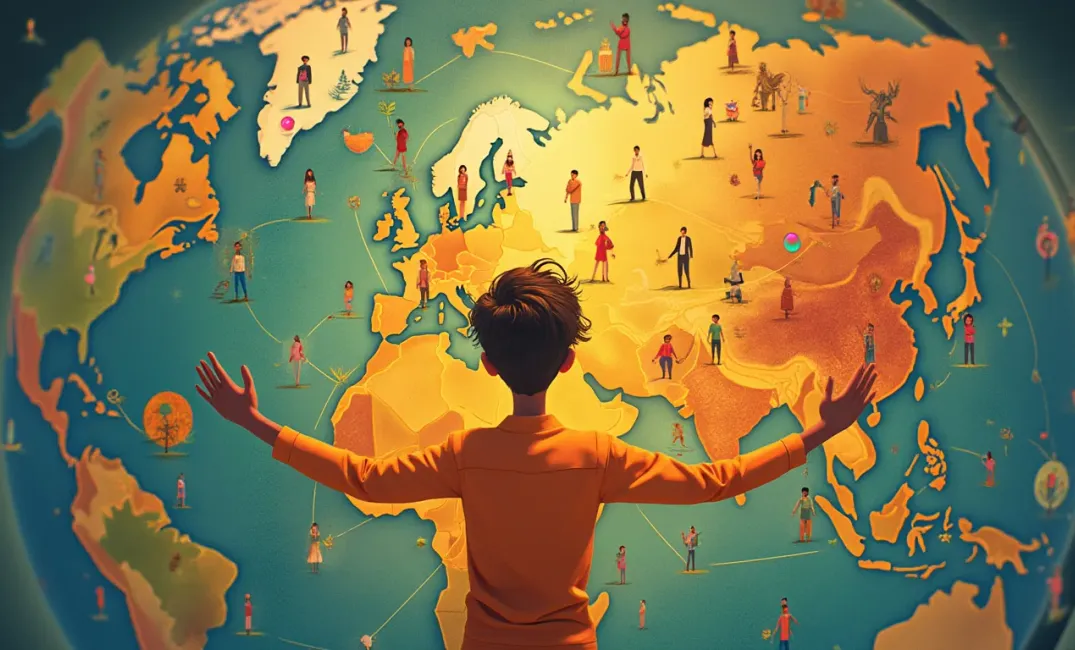Introduction: The Power of Empathy
Empathy—the ability to understand and share the feelings of another—has been an integral part of the human experience. It connects individuals across cultures and eras, fostering compassion and unity in diverse societies. In this entry, we delve into the art of empathy, exploring its role in personal relationships, cultural exchanges, and societal transformations. Empathy transcends mere emotional connection; it is instrumental in nurturing understanding, promoting social progress, and forging global harmony amidst the myriad complexities of contemporary life.
"Empathy is seeing with the eyes of another, listening with the ears of another, and feeling with the heart of another." — Alfred Adler
The Roots of Empathy: Evolutionary and Philosophical Foundations
Evolutionary Perspectives on Empathy
- Primordial Bonds and Communication: Empathy, rooted in our evolutionary past, facilitated social bonding and cooperation among early human communities. It enabled empathy-driven communication crucial for survival, sharing resources, and nurturing offspring, imprinting emotional resonance in human nature.
- Mirror Neurons and Emotional Mirroring: Discoveries in neuroscience, specifically mirror neurons, elucidate empathy's physiological underpinnings. These neurons enable individuals to mirror others’ emotions, underpinning the biological basis for shared experiences and understanding—a core evolutionary adaptation.
Philosophical Insights
- Stoicism and Emotional Connection: Stoic philosophers, though often associated with emotional restraint, emphasized understanding others through rational empathy. They advocated for maintaining equilibrium by acknowledging others' feelings, a principle reflected in modern cognitive behavioral approaches.
- Eastern Philosophies of Connectedness: Traditions such as Buddhism and Confucianism highlight empathy as an essential virtue, promoting interconnectedness. Compassionate engagement, as seen in these philosophies, underscores empathy's role in achieving societal harmony and personal enlightenment.
Empathy in Cultural and Artistic Expression
The Arts as Vessels of Empathy
- Literature and Empathetic Insight: Stories, whether ancient epics or contemporary novels, foster empathy by immersing readers in varied perspectives. Authors like Leo Tolstoy and Toni Morrison craft narratives that illuminate human emotions and drive cultural understanding through rich character exploration.
- Visual Arts and Emotional Resonance: Art communicates empathy beyond words, capturing emotions through color, form, and texture. Masterpieces, from Picasso’s Guernica to Frida Kahlo’s introspective self-portraits, elicit empathetic responses, challenging viewers to engage with shared human experiences.
Music’s Empathic Universality
- The Language of Emotion: Music, a universal form of human expression, transcends cultural and linguistic barriers. Compositions evoke profound empathy, enabling collective experiences where listeners of diverse backgrounds resonate with emotions expressed through rhythm, melody, and harmony.
- Promoting Social Change: Throughout history, music has served as a vehicle for empathy-driven activism. Artists like Bob Dylan and Nina Simone used their voices to highlight social injustices, promoting empathy for marginalized communities and advocating for systemic change through compelling narratives.
Empathy as a Catalyst for Social Transformation
Historical Movements Fueled by Empathy
- Civil Rights and Advocacy: Empathy underpinned the civil rights movement, fostering solidarity and understanding across racial divides. Leaders like Martin Luther King Jr. appealed to the collective conscience, urging an empathetic society to confront inequality and embrace justice.
- Global Humanitarian Efforts: Initiatives like Doctors Without Borders and the International Red Cross derive strength from empathy's transformative power. These organizations exemplify global empathy in action, responding to crises with compassion and providing relief to those in need, regardless of geographical borders.
Contemporary Empathy and Social Media
- Digital Empathy and Connection: Social media platforms reshape empathetic connections in the digital age, enabling real-time emotional exchanges across distances. Despite challenges like misinformation, these platforms amplify empathy by raising awareness of diverse experiences, nurturing global solidarity.
- Memetic Empathy and Viral Movements: Viral campaigns, such as the #MeToo movement, harness digital empathy to catalyze social change. By amplifying personal stories, these movements foster collective empathy, propelling conversations around systemic issues and inspiring actionable progress.
Empathy and Its Psychological Dimensions
Cultivating Empathy in Personal Development
- Emotion Recognition and Response: Empathy involves recognizing others' emotions and responding appropriately. Empathetic communication skills, including active listening and perspective-taking, enrich personal relationships by fostering deeper connections and mutual understanding.
- Empathy's Role in Conflict Resolution: In conflict resolution, empathy acts as a bridge, dissolving misunderstandings and enabling constructive dialogue. By empathizing with opposing viewpoints, individuals can navigate disputes with grace and seek mutually beneficial outcomes, enhancing social cohesion.
Empathy in Mental Health and Well-being
- Therapeutic Applications of Empathy: In mental health care, empathy is a cornerstone of effective therapeutic practices. Therapists, utilizing empathetic approaches, create safe spaces for individuals to explore their emotions, promoting healing and empowerment through compassionate interactions.
- Fostering Resilience and Empathy: Empathy contributes to personal resilience by encouraging altruism and community support. By cultivating empathy, individuals build robust social networks, enhancing their capacity to cope with life’s adversities and fostering a collective resilience-oriented mindset.
The Future of Empathy: Challenges and Opportunities
Global Empathy and Ethical Innovation
- Fostering Empathy in Technological Design: As artificial intelligence and technology advance, integrating empathy into technological design presents opportunities for enhancing user experiences. AI systems with empathetic capabilities may revolutionize fields like customer service and personal health, offering tailored, compassionate interactions.
- Educational Frameworks for Empathy: Embedding empathy within educational frameworks can nurture future generations equipped to face global challenges with compassion. Encouraging empathy through experiential learning and social-emotional curricula fosters a culture of understanding and cooperative problem-solving in diverse fields.
Empathy in Policymaking and Global Governance
- Diplomacy and Empathy in Action: Incorporating empathy into international diplomacy encourages cooperative strategies and conflict resolution, prioritizing sustainable solutions. Empathetic negotiation emphasizes shared human interests, fostering alliances and enduring peace amidst geopolitical tensions.
- Empathy-Driven Policies for Inclusive Growth: Empathetic policy frameworks prioritize equity and inclusion, shaping societies that celebrate diversity and empower marginalized voices. By considering the human impact, empathetic governance advances holistic development, aligning collective progress with individual well-being.
Conclusion: Embracing Empathy as Humanity’s Guiding Principle
Empathy, a profound manifestation of human connection, embodies our capacity to transcend differences and forge united, thriving communities. It serves as both a transformative force and a guiding principle, leveraging the power of understanding in crafting a narrative for an inclusive, harmonious future.
As we advance into an era marked by globalization and technological innovation, empathy remains a vital compass, directing humanity toward compassion, creativity, and shared progress. By nurturing empathy within ourselves and our societies, we honor the intricate tapestry of human experience, empowering each thread to weave a world defined by unity, respect, and the boundless potential of collective endeavor.
"Through empathy, we discover the threads that bind us to one another, weaving a world where understanding blossoms into harmony and shared purpose." — Author Unknown
EMPATHY, SOCIAL TRANSFORMATION, HUMAN EXPERIENCE, CULTURE, ART, PHILOSOPHY

